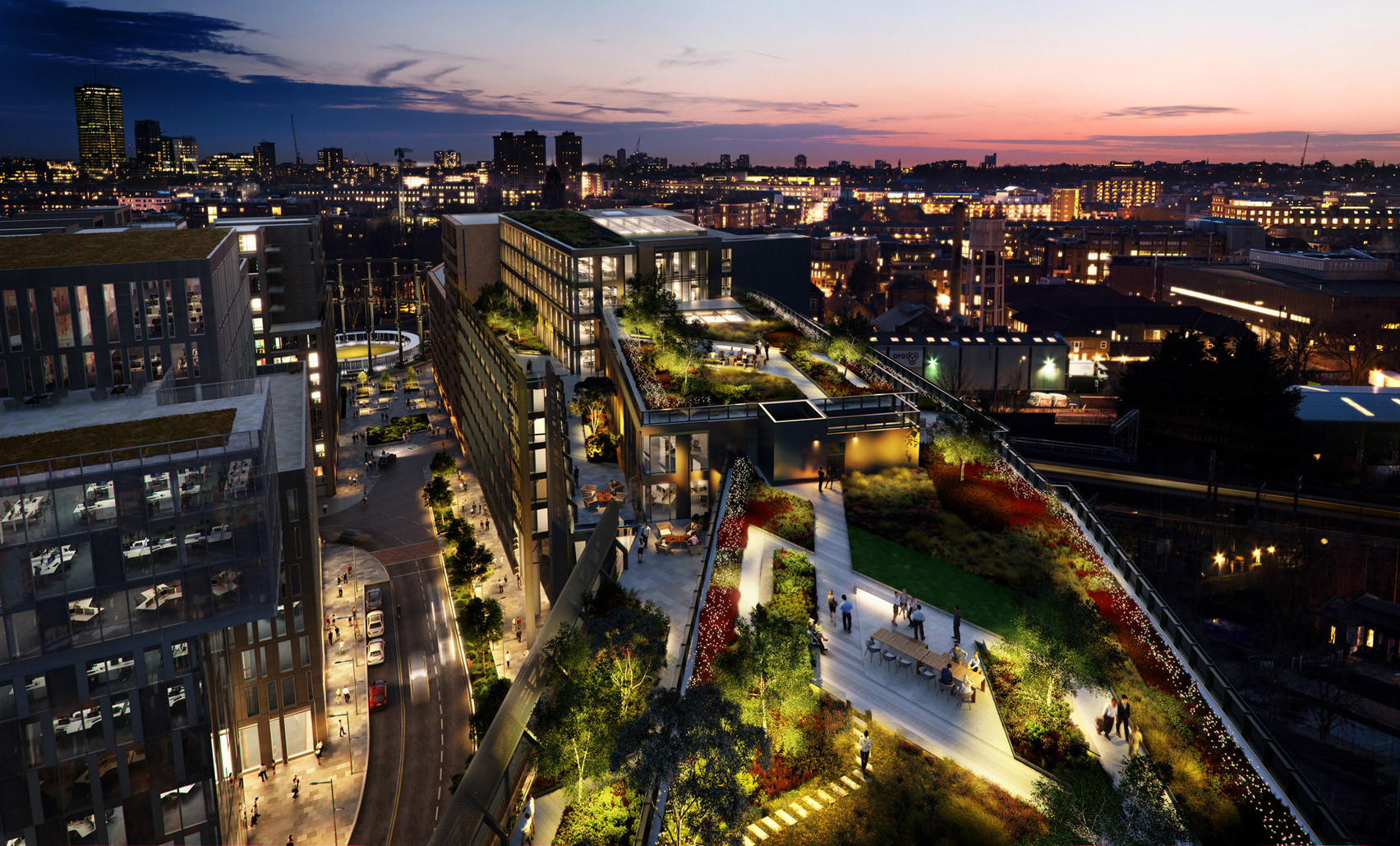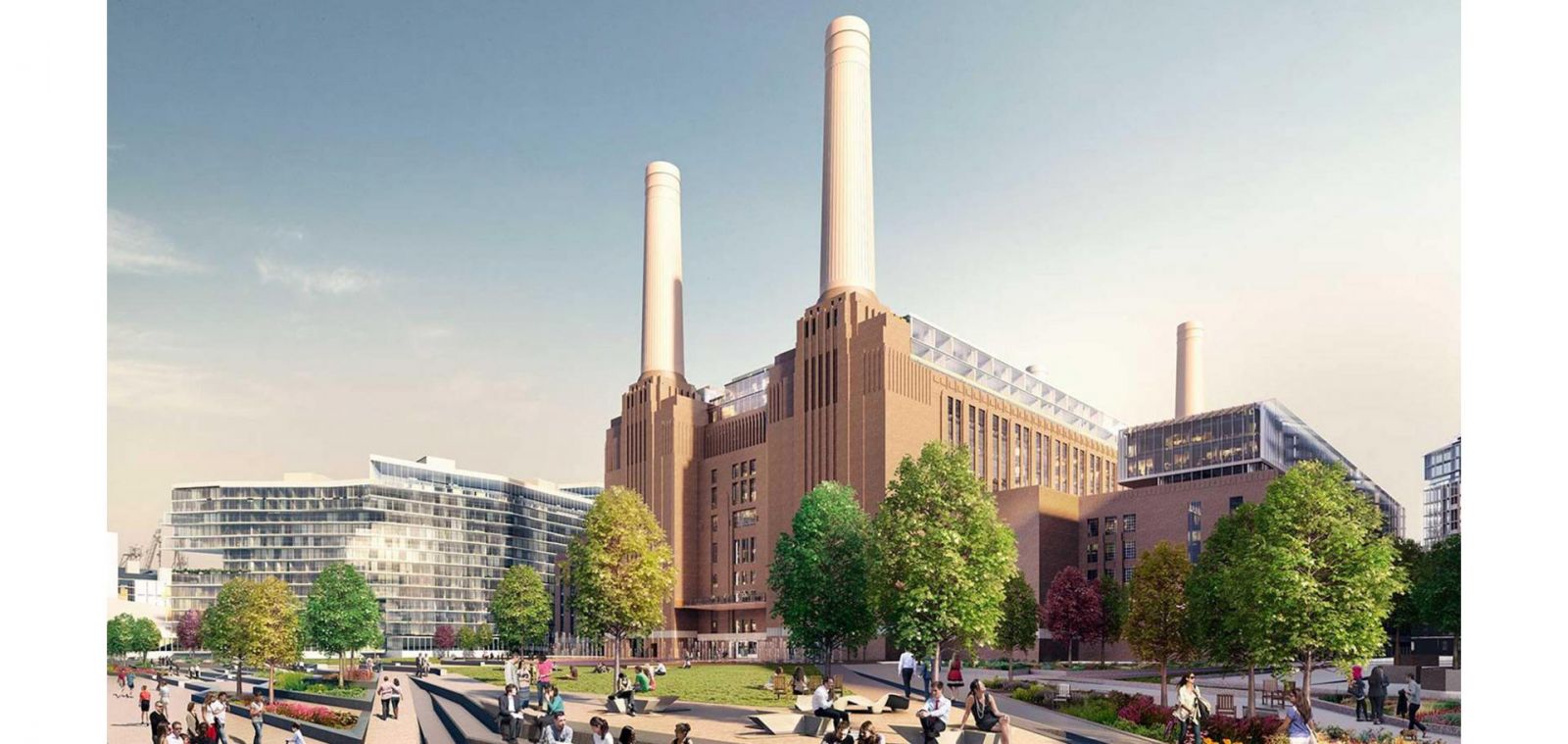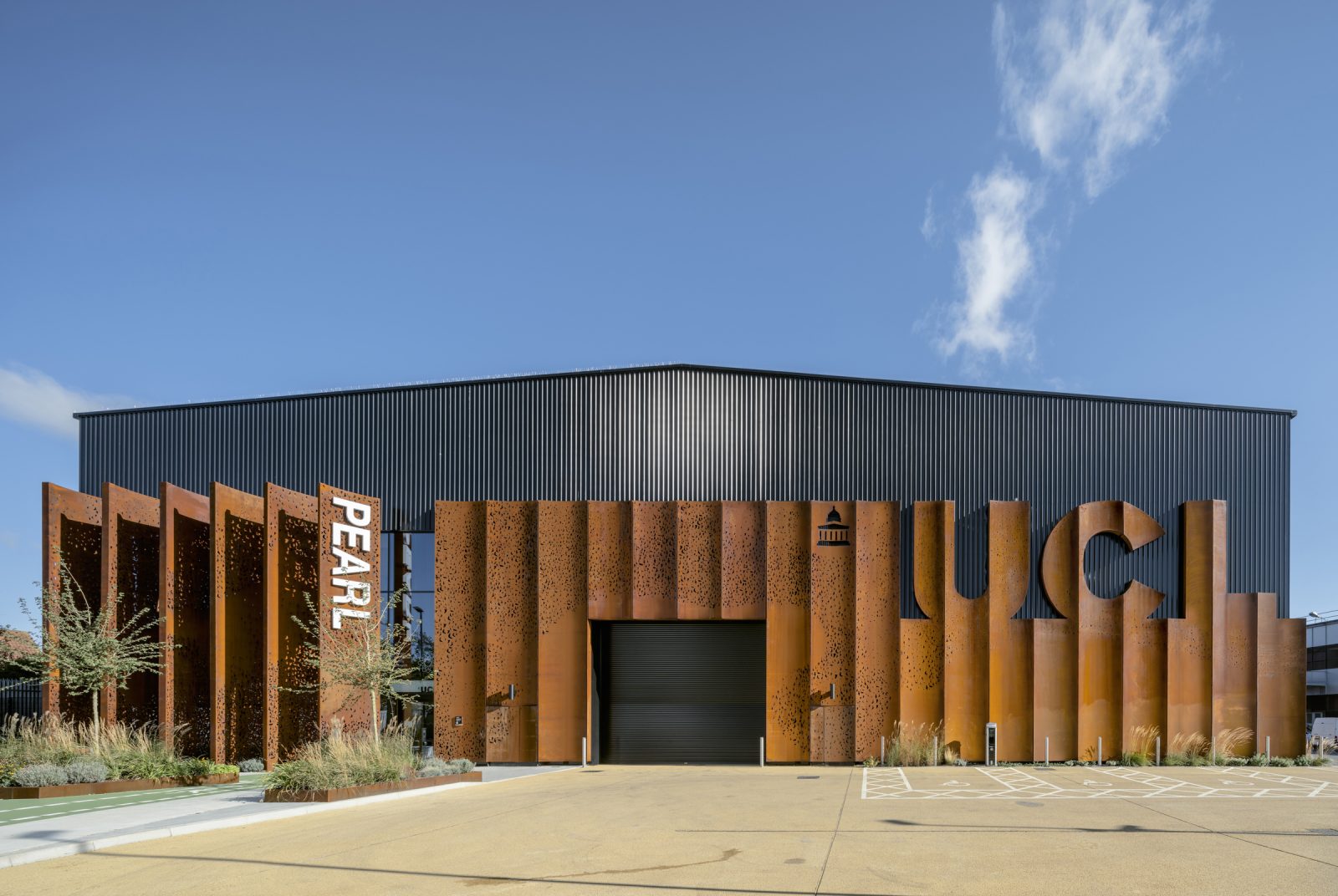Battersea Power Station’s Office Building and Roof Gardens Complete
Battersea Roof Gardens and 50 Electric Boulevard, an office building with 200,000 square feet of new workspace, have both completed. Watch the...
Read Full Article
In the first high performing buildings roundup of 2023, we take a look at The Commissioning Specialists Association’s highlights of innovative buildings.
As part of its Annual Awards Programme, the CSA invited members to submit projects that they had worked on for the “Project of the Year” category.
Keith Barker, the CSA’s Marketing Committee Chair, highlights some examples of these innovative buildings.
"There is no doubt that buildings with this level of sophistication and requiring such a high degree of integration require a significant input of commissioning and commissioning management expertise to knit the constituent parts together, even without any of the problems mentioned. There is already a marked element of systems engineering thinking needed and the impression that this aspect of a construction project will become more and more important grows by the day."
What are the current trends in today’s commercial buildings? Is it simply “use less energy” or are there other aspects of life that need to be taken into account? Of course, there are still, and always will be, those architects and designers that strive to produce signature buildings that stand out from a visual perspective and possibly pay only lip service to efficiency. There are also likely to be some buildings that strive towards the nirvana of net carbon zero. Perhaps not all of them have paid or will pay sufficient attention to the internal environment and its effect on the people who inhabit those buildings. Most of us will likely accept that the ideal is the building that is visually stunning, provides an internal environment that engenders enthusiasm in the occupants and does it in a way that minimises the carbon footprint and costs of both the construction phase and the ongoing operations of the building.
Throughout the summer, the Commissioning Specialists Association, as part of its Annual Awards Programme invited Members to submit projects that they had worked on for the "Project of the Year" category. Each of the entries were carefully considered by the independent judging panel against a set of pre-defined criteria, with the associated scoring being applied in secret. What was striking however, was the wide array of entries, the different approaches taken in the designs and the innovative solutions that came about. It was also clear that, as might be anticipated, the local environments had a significant influence on the direction of the design of the building services.
Let us look at some of the key elements of those entries that made it to the finalists list – and bear in mind that there is no judgement or evaluation here; it is just a simple identification of what those key elements are. You, the reader, should make your own minds up as to which entry you think worthy of the award.
But if you are interested – and we certainly hope you are – the list of all the Winners that were announced on the evening of 6th October, can be found on the website – www.csa-awards.co.uk.
Anyway, back to the buildings, which are addressed here in no particular order.
Yes, it does have visual impact and the cantilever effect is striking. But it also reflects the local environment in that it focuses not just on energy efficiency, but also on water efficiency – quite important in a desert locale.
The latest phase of Battersea Power Station in London. This iconic listed building has graced the London skyline since the early 1930s. Obviously the listed status has some limitations on what innovations can be brought to the building. There is a focus on efficiency, not just in terms of energy use in operation, but also in terms of construction.

Picture: a photograph of Battersea Power Station. Image Credit: CSA
University of Salford’s School of Science, Engineering and Environment achieves a BREEAM ‘Excellent’ standard through, amongst other things, the use of natural light, low power lighting and photovoltaic panels along with air source heat pumps.
University College London’s PEARL (Person-Environment-Activity Research Laboratory) is out of the ordinary in that it is a very flexible building designed to permit almost infinite variations in the environment so as to study the effects of those on people housed within them. Even so, the use of a ‘circular economy’ approach guides the building towards a net carbon zero classification.

Picture: a photograph of University College London’s PEARL (Person-Environment-Activity Research Laboratory). Image Credit: CSA
Birmingham’s Alexander Stadium East Stand redevelopment is intended to provide flexible space so that one or more events can take place at the same time and spaces can be used intermittently. To achieve this some services use small local systems or larger plants with local control units for specific spaces.
T Zone, Kings Cross, London has a particular focus on local biodiversity and occupant wellbeing. The initial shell & core achieved BREEAM ‘Outstanding’, while the fit-out is to LEED ‘Platinum’ standard. 10% of the overall areas is dedicated to roof gardens and terraces promoting biodiversity. Along with other initiatives this results in a carbon neutral building.
Soho Place is a development alongside the Tottenham Court Road tube station that has a number of innovations worthy of note. It uses a ‘plug and play’ energy centre and bio-diverse roof areas. Embodied carbon has been offset using verified schemes. The target is for BREEAM Outstanding, LEED Gold and EPC B energy standards.
Project Jupiter in Leamington Spa is a state-of-the-art, high-capacity laboratory complex built to provide quality COVID testing facilities using cutting edge technologies. The carbon footprint was minimised by re-using an existing warehouse building, along with some of the electrical infrastructure within the building.
These buildings used a variety of methods to become environmentally friendly, including photovoltaic panels, off-site modular construction, recycling of wastewater, CHP engines, district heating and cooling systems, careful selection of materials, attention to access and maintenance strategies to help reduce running costs.
The overall picture from this sample of quality projects is that the UK construction industry employs a wide range of high-tech, innovative solutions aimed at reducing carbon footprints and environmental impacts, increasing energy efficiencies, and improving the occupant’s experience.
With that wide range of high-tech solutions comes the potential pitfalls in making them all work together. The design engineers on any project will start out fully intending that all of the systems are fully integrated and work together seamlessly and, on paper – OK on screen these days, they almost certainly will. It is also true that pretty much every project is a dynamic entity that changes over time. This might be due, for example, to variations in the client’s requirements or manufacturer’s developments in the equipment being used. Occasionally there may also be just a simple mistake.
All of a sudden, two systems that should have worked seamlessly together cannot even recognise each other; a control valve does not have sufficient authority over a revised flowrate or two items of equipment turn out to have different types of Modbus communication protocol. Even something as simple as normally open versus normally closed contacts or mismatched baud rates can cause unexpected problems that take time and effort to resolve.
There is no doubt that buildings with this level of sophistication and requiring such a high degree of integration require a significant input of commissioning and commissioning management expertise to knit the constituent parts together, even without any of the problems mentioned. There is already a marked element of systems engineering thinking needed and the impression that this aspect of a construction project will become more and more important grows by the day.
It is fortunate, therefore, that some of the forward thinkers in the building services sector are rising to the challenges that these developments pose. The Chartered Institution of Building Services Engineers has recently undertaken a comprehensive review and update of their Commissioning Code M: Commissioning Management. They are also in the process of updating some of their other codes, such as Code A for air systems and Code W for water systems.
The CSA helped to finance this exercise and also provided some of the members of the steering group that contributed to and oversaw the process. It is also important that the CSA has itself instigated the “Introduction to Commissioning Management” training course alongside its existing commissioning engineer training material and now also has a commissioning management path of development in place.
It is also understood that BSRIA are looking closely at revisions for some of their applicable Guides like BG 49/2015 Commissioning Air Systems. Again, the CSA stands ready to contribute to this initiative.
The conclusion is that there has undoubtedly been a significant increase in the complexity of the services integration in buildings and indications are that this is likely to continue. It will require a corresponding shift in the skill set of the testing and commissioning function and this is already being reflected in the progress shown in available training material from major industry bodies.
And just one final thought. The projects mentioned above that made the finalists list in the CSA awards were all more than worthy of that accolade and were prime examples of a successful approach to commissioning – perhaps it is no surprise that all of them employed CSA Member companies to achieve that.
Picture: a photograph of the T Zone, Kings Cross, London. Image Credit: CSA
Article written by Keith Barker | Published 23 January 2023
Battersea Roof Gardens and 50 Electric Boulevard, an office building with 200,000 square feet of new workspace, have both completed. Watch the...
Read Full ArticleAviva Investors’ Grade II listed Victorian HQ has undergone an extensive refurbishment. 134-46 Curtain House in Shoreditch was built between 1881 and...
Read Full ArticleThe new Asllan Rusi sports palace in Albania is set to become a new landmark for the city of Tirana. Architect MVRDV has won the competition to design what’s...
Read Full ArticleNew York’s skyline has just got an eco-friendly upgrade with the opening of 270 Park Avenue – the new state-of-the-art global headquarters for...
Read Full ArticleA new 23-storey office building at One Cutler Street in the City of London will be delivered by contractor Multiplex. Brockton Everlast has selected Multiplex under a...
Read Full ArticleThe British Council for Offices’ annual National Awards have revealed an exciting shift in office design – customer experience taking centre stage. For the...
Read Full ArticleCBRE Investment Management has transformed 30 Semple Street into a game-changer for sustainable offices in Scotland. The building, situated in the Fountainbridge area...
Read Full ArticleGrand Bayview Qianhai, a two tower apartment building in Shenzhen, China, is an example of a new building typology that specifically targets isolated city...
Read Full ArticleDemolition works have begun on the St Giles Quarter masterplan site, a long-neglected area of the West End. A vacant Travelodge, NCP car park and derelict buildings...
Read Full ArticleSix projects have been shortlisted for the RIBA Stirling Prize 2025, the highest architectural accolade. The shortlist includes the Elizabeth Tower, which houses Big...
Read Full Article